By: Tyler Gallagher |
As part of our series about what one should look for when hiring a financial planner or adviser, I had the pleasure of interviewing Jeff Motske, CFP®, president and CEO of Trilogy Financial, author of “The Couple’s Guide to Financial Compatibility” and host of “The Jeff Motske Show.” Jeff Motske, CFP®, is president and CEO of Trilogy Financial, a privately held financial planning firm headquartered in Huntington Beach, Calif. with 10 offices and more than 100 advisors nationwide. He is the author of “The Couple’s Guide to Financial Compatibility,” a book that equips couples with tools to keep their finances healthy and relationships strong, and host of “The Jeff Motske Show,” a podcast that also airs on LA’s AM 1150 where he guides listeners through proven steps toward financial freedom. Seeking a better version of the industry he had grown to love, Motske founded Trilogy in 1999 after observing that the “Wall Street-style” mentality of his peers conflicted with the “Main Street-style” needs of his clients. For the past 25 years, Motske has empowered everyday Americans to pursue the day that work becomes an option by providing easy-to-understand advice, educational tools and supportive guidance. He understands there is no one-size-fits-all approach to personal finance, and that people deserve advice that is tailored to their unique needs, lifestyle, personality and goals. Jeff Motske is a registered representative of and securities offered through LPL Financial, Member FINRA/SIPC.
—
Thank you so much for doing this with us, Jeff! Our readers would love to ‘get to know you’ a bit more. Can you tell us a story about what brought you to this specific career path?
I was introduced to the financial industry by a college professor who noticed my aptitude for numbers. It was the people, the clients I met along the way who needed my help, that kept me in the industry. As a young man, I was empowered by the good I could do for my clients. There were retired widows who appreciated increases in their monthly incomes and young families just getting started on the road to financial independence. I truly value those relationships and am proud to see some of those young couples I worked with long ago reach their goal of financial independence and to work with their grown children who are just getting started on their own financial path.
Can you share a story about the most humorous mistake you made when you were first starting in the industry? Can you tell us what lesson or takeaway you learned from that?
Mistakes aren’t limited to when you start in the industry. I made one just a few short years ago that I often share. I had been working with a particular couple for twenty or so years when it was finally time for them to retire. Over the years we had discussed all sorts of aspects of their planned retirement, from the details of selling their business to the possibility of selling their home. When I met with them to finalize the details of officially turning off their wage-earner cards, I asked what they had planned to kick-off their retirement. The husband told me that he wanted to rent an RV and travel the country visiting all of the national parks. I laughed, believing this was a joke. He had never mentioned such plans in all the years I had been working with them, and based on the shocked look on his wife’s face, he hadn’t mentioned those plans to his wife either. A few days later, I received a call from the wife, telling me that I had to speak to her husband and talk him out of this idea. In the end, they chose to take one trip in an RV and headed out to Wyoming.
That trip seemed to satisfy both of them and became a great memory. For me, though, it was a reminder that you can never ask your clients enough questions. As the author of “The Couple’s Guide to Financial Compatibility,” I pride myself on asking in-depth questions to get couples on the same financial page. Clearly, though, it doesn’t hurt to dig a little deeper to ensure that you’re creating a detailed and thorough plan for your clients’ finances and life.
Are you working on any exciting new projects now? How do you think that will help people?
At Trilogy, we are constantly refining our teams of advisors. In an effort to ensure a complete and uninterrupted service model for our clients, our advisors work in groups. Multiple team members sit in on client meetings to ensure proper notes are recorded and to establish relationships with clients. This creates a smooth transition should a team member ever be unavailable due to illness, other commitments or even vacation. Our team members also have different areas of expertise to ensure that every client receives a comprehensive level of service.
Are you able to identify a “tipping point” in your career when you started to see success? Did you start doing anything different? Is there a takeaway or lesson that others can learn from that?
There definitely have been moments in my career that heralded momentary success. Over the years, though, I’ve realized that it’s best to look ahead. Our industry is constantly changing, and it doesn’t benefit anyone to sit back and rest on their laurels. Success comes to those who are constantly striving to be innovative and ahead of the curve.
What three pieces of advice would you give to your colleagues in the finance field to thrive and avoid burnout? Can you give a story or example?
First, I do believe that being part of a peer-to-peer study group is an invaluable resource, as is finding a quality mentor. Spending time with other successful people is a great way to stay motivated. These people also provide strong examples of how to improve in your field. Some of Trilogy’s great innovations have been derived from sharing and refining ideas with peers, both by chatting with them and by seeing how they operate.
Equally important is enjoying what you do, which is why we champion the team dynamic. I truly believe that being a financial advisor is a noble profession. However, that doesn’t mean you have to like every aspect of it. When the right teams are formed, you can focus on where your strengths lie while another team member can excel in an area in which you would gladly not spend much time. Not only does this play to everyone’s strengths, but it also facilitates a flexible schedule where advisors are able to pursue other activities with their family or in the community.
Lastly, I do believe that you need a healthy work-life balance. Yes, you do have to work hard to achieve success. At the same time, you also don’t want to miss the moments of watching your child’s soccer game or giving time to a charity that is important to you. My personal mission statement is, “Do something wonderful for someone every day,” and I don’t mean just at work. Success isn’t simply a reflection of what your title is or how much you have in the bank. Success is a reflection of the positive impact you made on the people you interact with in every aspect of your life.
Ok. Thank you for all of that. Let’s now move to the core focus of our interview. As a “finance insider”, you know much more about the finance industry than most consumers. If your loved one wanted to hire a financial advisor (not you :-)), which 5 things would you advise them to find out about before committing? Can you give an example or story for each?
1. Comfort: Make sure that you find someone you can talk intimately with about your finances. You want to feel comfortable sharing personal details with them and be able to ask questions about the advice they’re giving you. You need to feel that you’re in a true partnership with your trusted financial advisor.
2. Communication: You need to communicate a lot with your advisor. You should be sharing both your dreams, so they can plan appropriately, and your fears, so they can adequately address them.
3. Credentials: You want an advisor that is acting in a fiduciary capacity. This means the advisor is acting in the best interest of the client at all times.
4. Part of a team: It’s beneficial to avoid relying on a single financial planner. There may be moments that you need a timely response, and it’s valuable to know there is someone you can address when your primary advisor is busy meeting with other clients or out of the office. Also, while working with a solitary older advisor can provide experience, younger clients need to be aware that they run the risk of these advisors retiring before they reach their own destination of financial independence. The last thing a client wants is for their financial advisor to not be available when he or she is needed most.
5. Connections: An advisor with access to other experts in neighboring fields, such as taxes, estate planning and insurance risk, can seamlessly solidify your personal network. Not only are such referrals valuable when trying to select a particular professional, but they can also add a level of ease and security if your financial advisor has an ongoing professional relationship with them.
I think most people think that financial advisors are for very wealthy people. This is likely not actually true. Can you explain who would most benefit from hiring a financial advisor and why? Can you give an example?
Middle America definitely needs to work with a financial advisor more than wealthy people. A trusted financial advisor can help keep you on track and accountable to your goals. Without that help, many will fail to save or plan enough and ultimately have trouble securing what they’ve been working so hard to achieve. Additionally, the market can be an intimidating place for inexperienced investors. A trusted advisor can ensure that they make sound decisions when things get rocky, rather than allow their emotions to take the wheel. Having money can solve a lot of problems, but building wealth requires a lot of work, patience and tenacity.
None of us are able to achieve success without some help along the way. Is there a particular person who you are grateful towards who helped get you to where you are? Can you share a story about that?
I am part of a CEO study group, and I owe a lot to those group members. The open and honest feedback I have received over the years from my peers has been invaluable, and the relationships I have formed have been life-lasting.
You are a person of great influence. If you could inspire a movement that would bring the most amount of good to the most amount of people, what would that be? You never know what your idea can trigger.
My personal mission statement is, “Do something wonderful for someone every day,” which illustrates my belief that each person has the power to make a positive impact. This extends well beyond finances. At Trilogy, we believe our purpose is to provide opportunities for people to live their best lives. Obviously, this can be seen in the steps that we take to help our clients reach financial independence. This also applies to how we empower and encourage our advisors to become leaders, both at Trilogy and in their community. We also encourage our team members across departments to aid and lift up their fellow associates. We are all interdependent, and we recognize that when we lift someone else up, we lift ourselves up as well.
Thank you so much for joining us. This was very inspirational.
Click here to read the full story.
...


